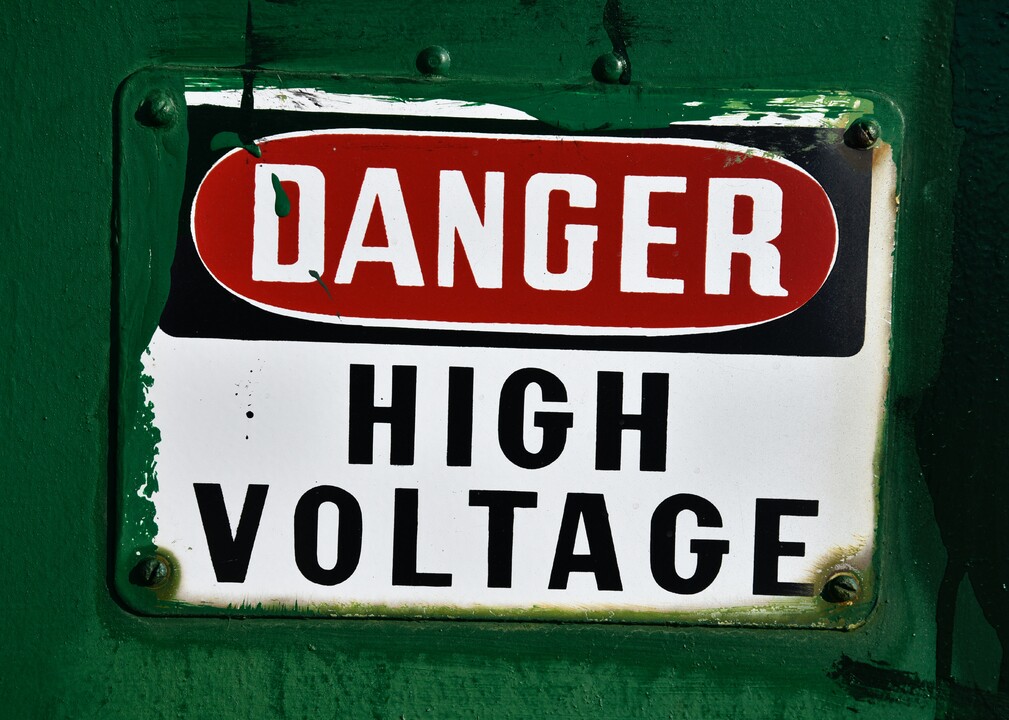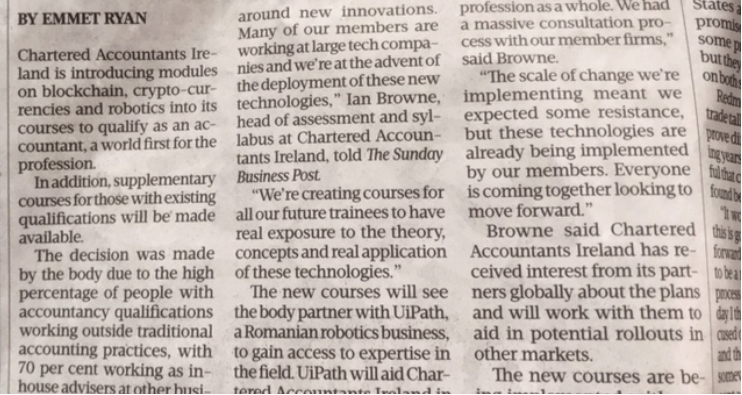40 Essential Selection Criteria to Choose an RPA Platform – Part 2 of 5
Now that your company has decided to invest in RPA selecting a platform that best matches your bold business strategy is essential.
Listed below are a second set of 8 key criteria that should be considered as you select an RPA platform. This follows on from part 1 of our #RebootRPA series.
1. POV / POC experience – a Proof of Concept (POC) or Proof of Value (POV) exercise is key to your trying before buying a tool. If your vendor is truly committed to your success, they will provide significant help during this phase. Do expect to pay a systems integrator up to $50k for a proper process selection / proof of concept build but do expect your vendor to help.
“Realising business outcomes from automation requires more than just product functionality. In order to minimise barriers to entry, drive successful engagements and deliver valuable outcomes quickly for our customers and prospects, we have found it critical to design an automation adoption pathway e.g. a free 3-day Kickstarter workshop to deliver a working prototype/PoC and demonstrate automation in context; a 2-week design sprint to facilitate defining a vision, identifying best targets for automation, creating alignment and developing an initial 3-month execution plan; and a 12-week launch programme to assist in establishing an effective and scalable agile development and automation delivery model for the customer.”
Paul Arnold, Head of Product and Development
Automating a simple task in 3 days is NOT a valid test of a product. You need to select a process that will stretch your vendors product but not be so big as to prove impossible to complete in 8-12 weeks. Test several RPA products, build your business case, get fully involved in the process including coding; design thinking and lean for digital sessions, documentation, Agile ceremonies and planning sessions to fully appreciate the journey ahead.
As your organisation completes a POV and learns more about the art of the possible, and the impossible, you can start to further refine your intelligent automation business case. If you have no automation experience then work with a company who does.
“The first step of the RPA and IA journey, is to create a strong business case. The business case should include specific process-candidates for automation followed by all the required metrics (volumes, cases per day, average manual handling time, peaks, forecast volumes, exception rates, etc.). It should be created along with a Partner (consulting company or a smaller boutique), for companies without any internal knowledge, since it is the first and most important step on your journey.”
Konstantinos Vogiatzakis, Global RPA Lead at Babylon Health
2. Complete a back-end database compatibility check with your IT road-map and affordability. Ensure the vendors database back-end is on your organisations IT road-map (e.g. numbers of firms are deliberately moving away from SQL due to the cost of licences but SQL is the database back-end of many RPA products).
“Databases are the one thing in a software solution that IT are usually very precious about and want control over …make sure you consult them during vendor selection!”
Paul Arnold, Head of Product and Development
3. System security standards (e.g. encryption standards) – key for banks, financial service companies or indeed most companies is security. Ensure your vendor’s products are certified as secure (ask); that data is encrypted in transit and the excellent security surrounds the product in general (e.g. has the code been scrutinised for security leaks and product been pen tested by a reputable 3rd party).
“If it isn’t bank-grade security, don’t buy it. In this day and age you simply cannot afford to expose yourself.”
Edward Halsey, RPA Enterprise Account Manager
4. Role-based access and/or Active Directory Integrated – does your product integrate with your active directly allowing you to enjoy the same secure single sign standards your other applications offer, or do you have to manual create and delete user accounts and roles? If it is the later then please cost for additional time, and security audit checks, to manage user accounts outside of your normal process. Your IT team need to be involved in this process to ensure your RPA platform follows your organisation’s security standards.
5. Logging for security, compliance and auditing – your risk and compliance team should insist your software logs all user (and robot) actions and that this log is easily auditable for security tractability purposes.
“If your RPA platform doesn’t possess exceptional security, compliance and audit logging you have to question if that product will be suitable for your organisation.”
Gourav Datta, RPA and Intelligent Automation Delivery Lead
6. Solution cost – initial and approximate ongoing cost per year (inc. staffing requirement) and Cost of maintaining the product e.g. updates, staff time, etc. – buying an RPA product is often the cheapest part of the process; the upkeep, team and maintenance of your RPA product over multiple years can be significant (see A Robot is for Life not just for Christmas).
“Build all costs into your overall #RPA business case and determine if you are likely to recover that cost in advance of beginning an #RPA program e.g. infrastructure; development; maintenance; change management; consultancy; development; design, delivery, planning, testing and deployment staff; configurations costs; training costs; governance costs; preventative maintenance costs; software licences; system integrator / consultancy costs; hosting costs; management costs; SME time; preventative maintenance; process mining software; other required software costs (e.g. OCR; bot servicing; hosting, network and disk storage costs); etc.”.
Kieran Gilmurray, Global Head of Intelligent Automation
7. Disaster recovery capabilities – how easy is it to recover from complete or partial system failure. Always remember to hope for the best but plan for the worst. As your scale your RPA program your organisation’s dependence on robots will grow exponentially. Do remember to implement a robust business continuity / disaster recovery program. Note: Firms need to ensure robot processes are well documented and fully considered in business continuity planning and testing programs. Firms often ‘forget’ a process when people no longer complete it.
8. RPA process analytics and management information capabilities – one of the most significant benefits of your design for digital program is the insights you may glean from newly visible process analytics e.g. process volumetrics, wait times, cycle times, exceptions, etc. These are vital statistics that can help you re-engineer and optimise your process outcomes if used correctly.
“Significant benefits can be attained from an RPA investment by re-engineering processes either to reduce RPA exception rates (through process standardisation), increase throughput, or to increase reusable automation components (through process modularity). To achieve the significant multiplier benefits of these latter approaches, deep process improvement expertise is required but is worth the investment.”
Darren Mee, Head of RPA and Business Improvement
Selecting the right RPA tool or indeed intelligent automation tools is key to the success of your RPA journey. Get your tool selection right and you give yourself every chance of success. Get your tool of choice wrong and your costly business error may result in a loss of money and indeed your job.
What do you consider to be the most important criteria for selecting an RPA platform?
This article is part of a #RebootRPA series. #RebootRPA is a series of articles written by real world experts to help you overcome the challenges of selecting, implementing and scaling an RPA platform.
- RPA Reboot: RPA 101
- 14 rules for Robotic Process Automation (RPA) and Intelligent Automation (AI) success
- If you are not willing to go all in, then don’t put on your RPA swimsuit.
- The biggest lie told to RPA customers – 50 robots equals success
- 40 essential selection criteria to choose an RPA platform part 1 of 5
- 40 essential selection criteria to choose an RPA platform part 2 of 5
- 40 essential selection criteria to choose an RPA platform part 3 of 5
- 40 essential selection criteria to choose an RPA platform part 4 of 5
- 40 essential selection criteria to choose an RPA platform part 5 of 5
Tag and share: If this could benefit someone else tag them and share this.
Free to reuse: If you want to post this article on your LinkedIn page then please feel free to do so. The more information we share within the RPA community the more likely businesses are to succeed with this excellent technology.
Further Help: If I can help you in any way please do reach out.
Note: The views expressed above are my views and not those of my employer.










Leave a Reply